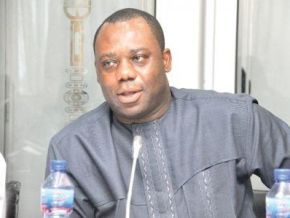- Ghana targets carbon neutrality by 2070 under a $550 billion transition plan.
- Renewables represent less than 2% of the energy mix while fossil fuels exceed 60%.
- The plan expects to create about 400,000 jobs by 2060.
Ghana advances its path toward carbon neutrality by 2070 under the National Energy Transition Plan (2022–2070). The government aims to increase the share of renewable energy in the national mix. Electricity access reached 86% in 2023.
Authorities accelerate the implementation of the Energy Transition and Investment Plan (ETIP), launched in September 2023 by former President Nana Akufo-Addo during the United Nations General Assembly. Government officials confirmed the progress on Friday, October 24, in reports published by the Ghana News Agency.
The Ministry of Energy developed the plan in partnership with Sustainable Energy for All (SEforALL). The initial phase prioritizes electricity, transportation and clean cooking.
The Ministry of Energy, led by Matthew Opoku Prempeh, coordinated regional consultations with private sector players, local governments and civil society. The plan outlines key actions such as rural solar electrification, the use of natural gas as a transition fuel and the phased deployment of electric buses in public transport.
ActionAid Ghana reports that fossil fuels still account for more than 60% of the national energy mix, while renewables contribute less than 2%. Authorities commit to raising the share of clean energy. Prempeh said during the launch in September 2023 that the plan represents “a transformative opportunity to build a low-carbon economy that creates jobs and sustainable industrial growth.”
Ghana aims to reduce CO₂ emissions by 200 million tonnes by 2060 under its Paris Agreement commitments. The country has a solar potential of 35,000 MW, according to the National Energy Transition Framework published in 2023 by the Ministry of Energy and the Energy Commission of Ghana.
The $550 billion plan expects to create around 400,000 jobs by developing local value chains in solar energy, low-carbon hydrogen, clean cooking technologies and electric mobility. The World Bank and SEforALL support these efforts.
Authorities acknowledge that financing remains the main obstacle. They expect most capital to come from private and international investors because public fiscal space remains limited.
The plan also calls for modernization of the national grid and a just transition for workers and communities dependent on fossil fuel industries. Experts cite in a November 2023 GasOutlook analysis the need for clearer tax incentives and more inclusive governance.
This article was initially published in French by Abdel-Latif Boureima
Adapted in English by Ange Jason Quenum
